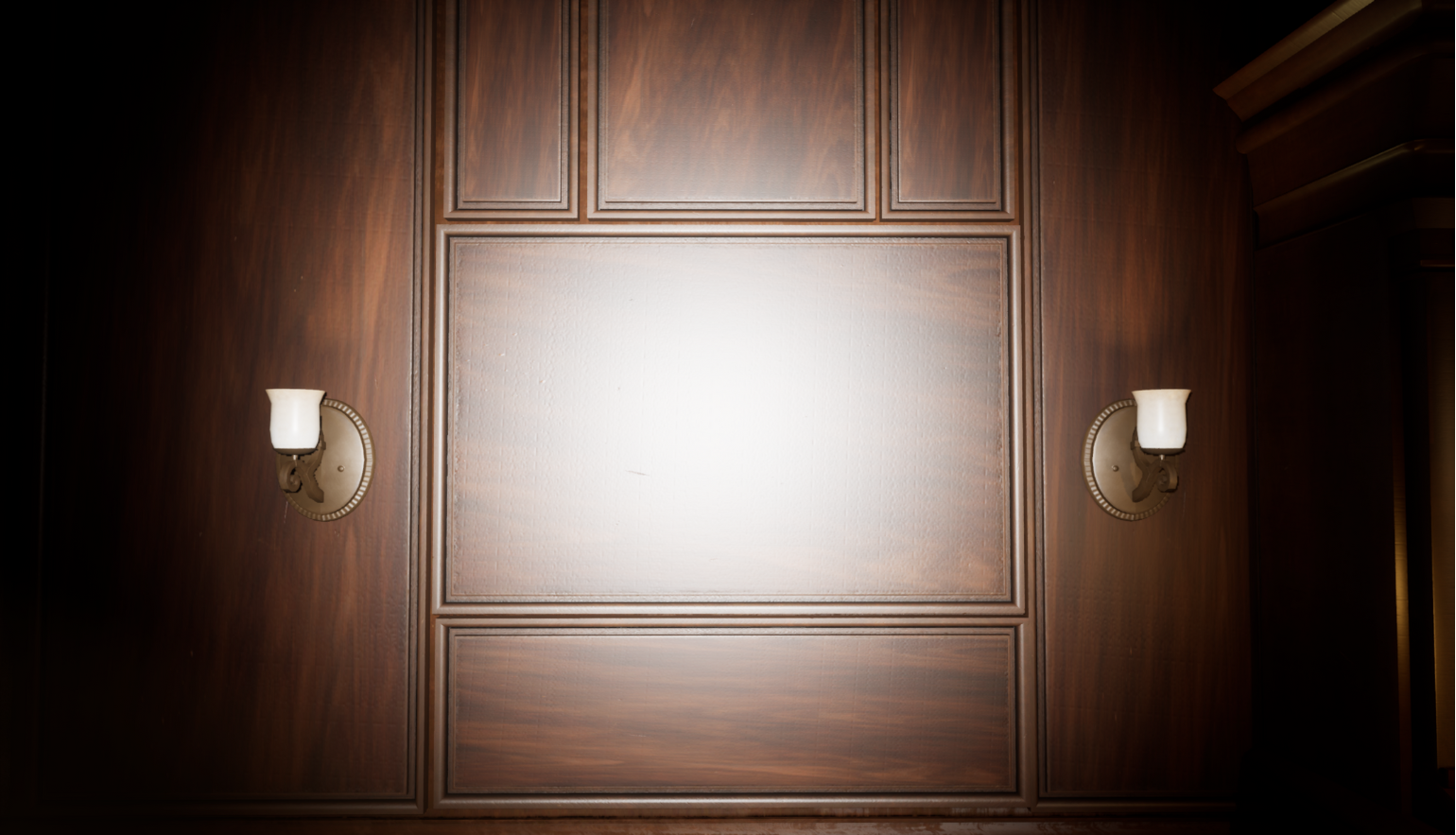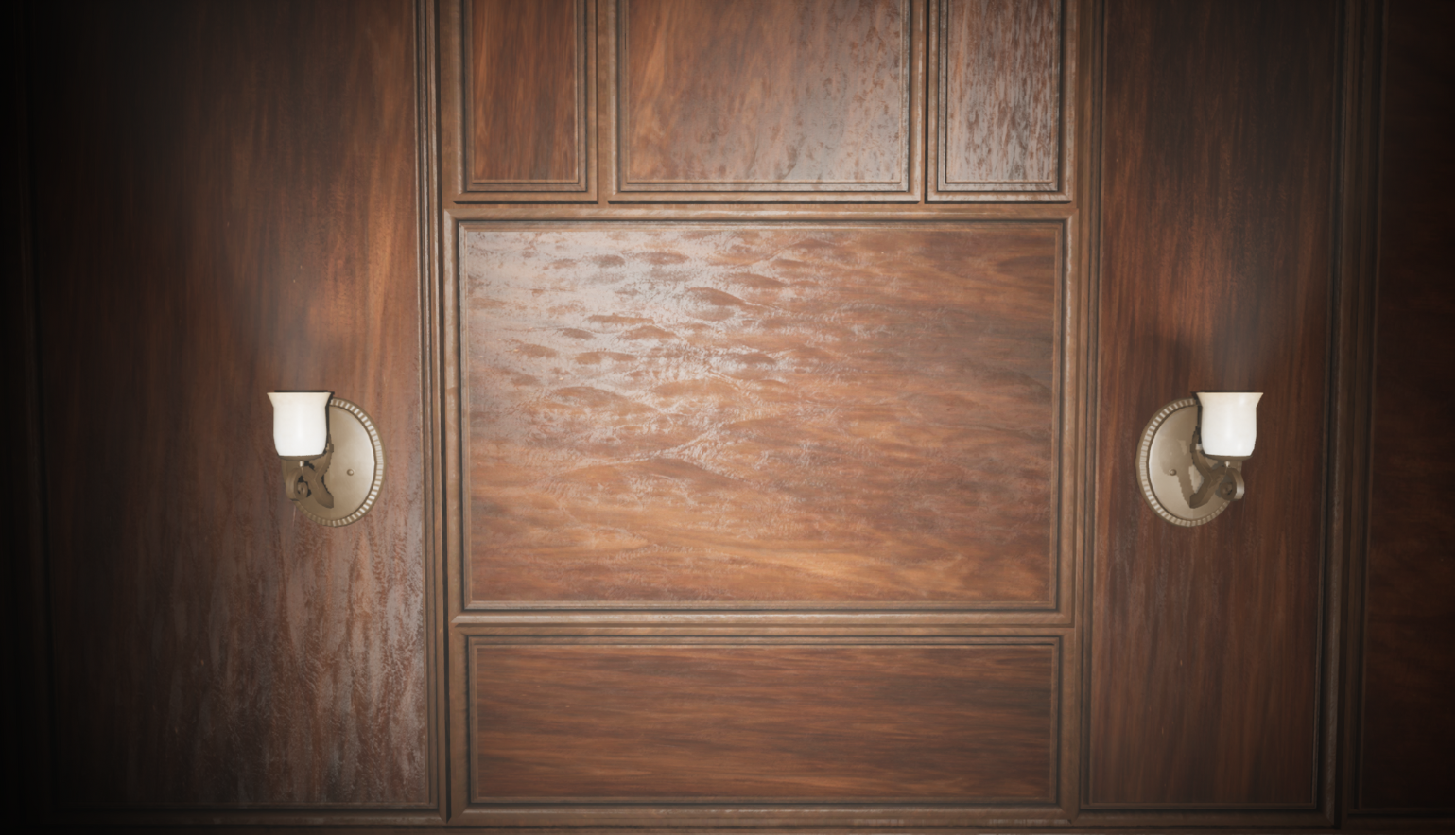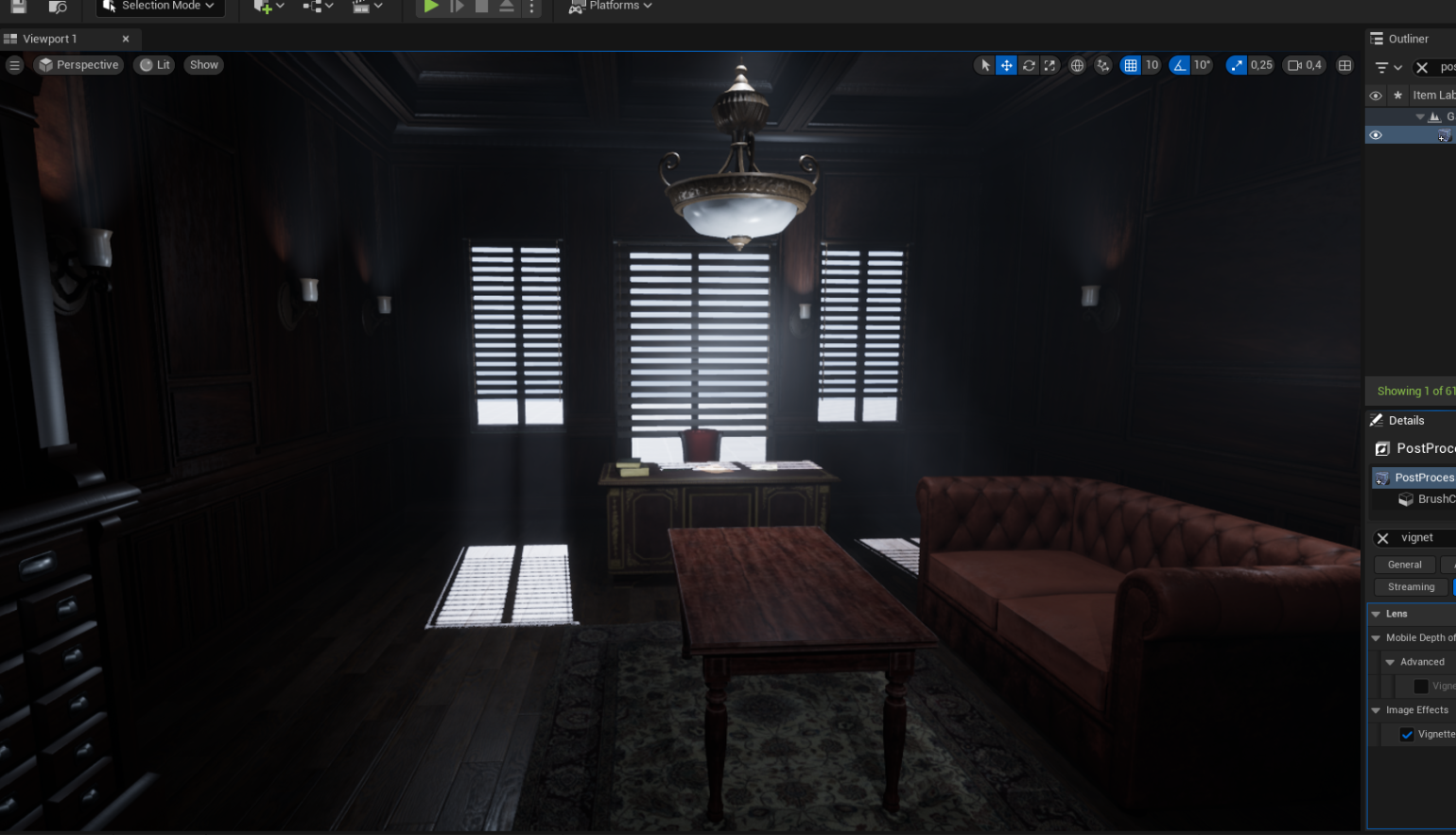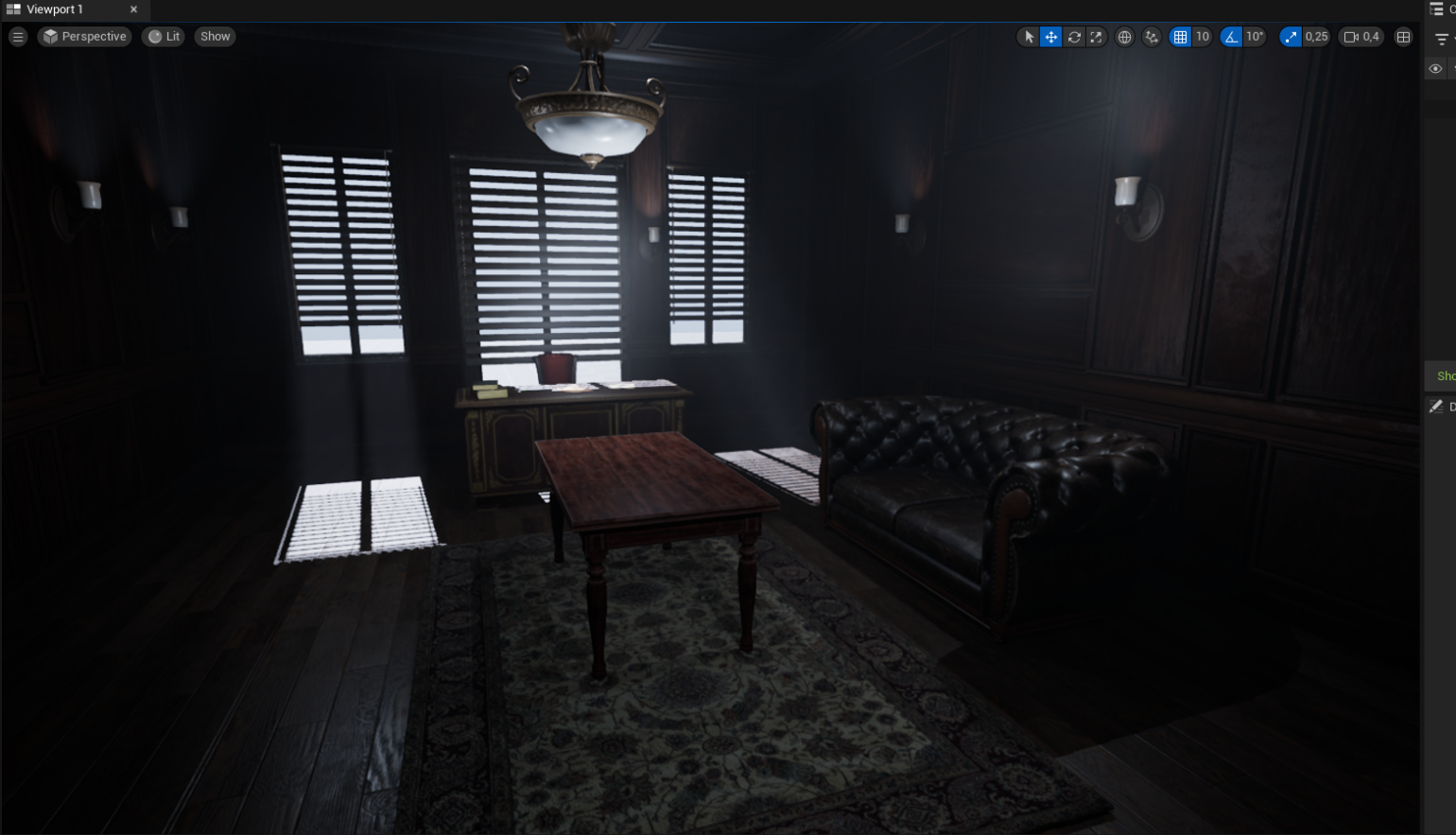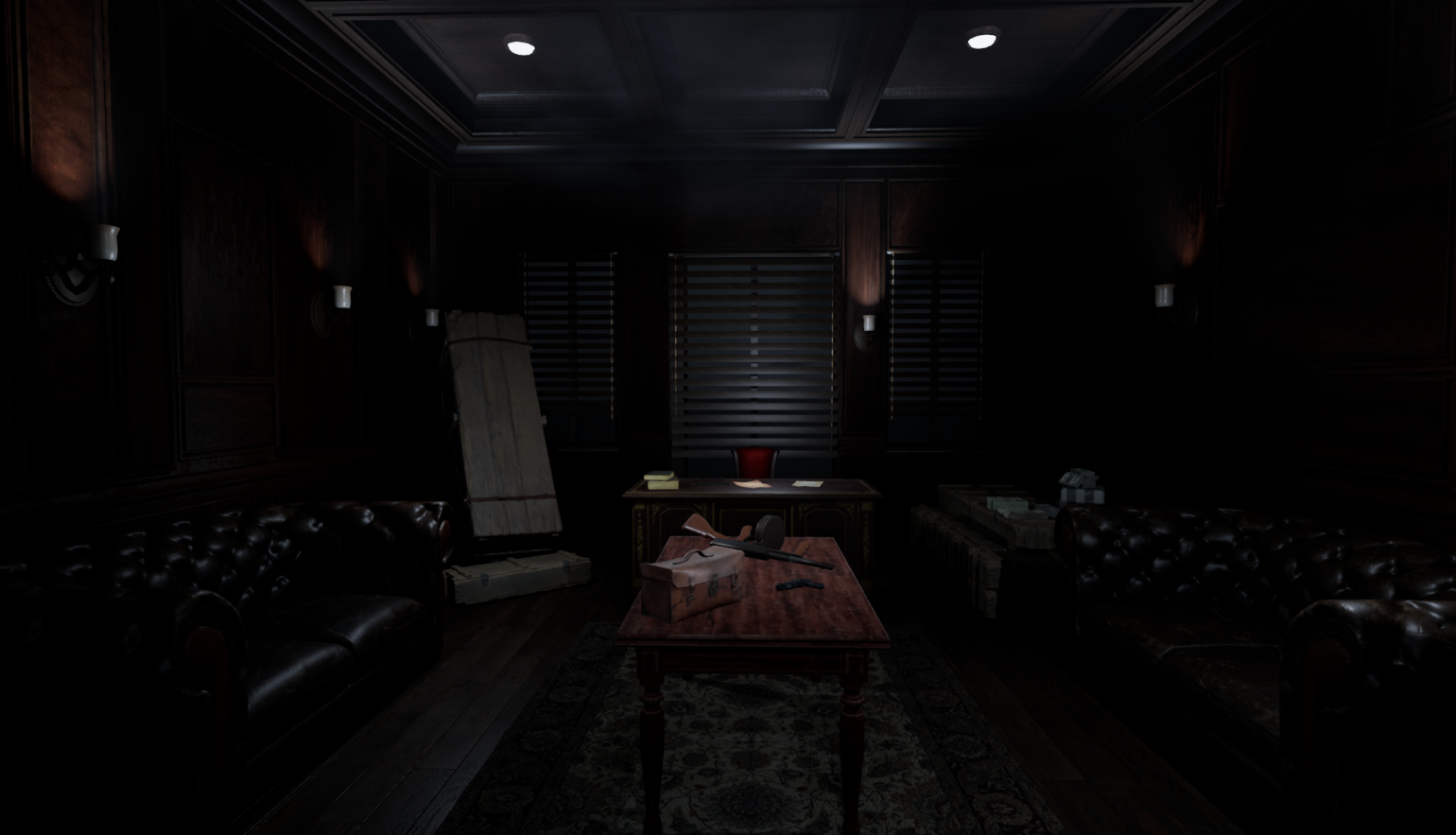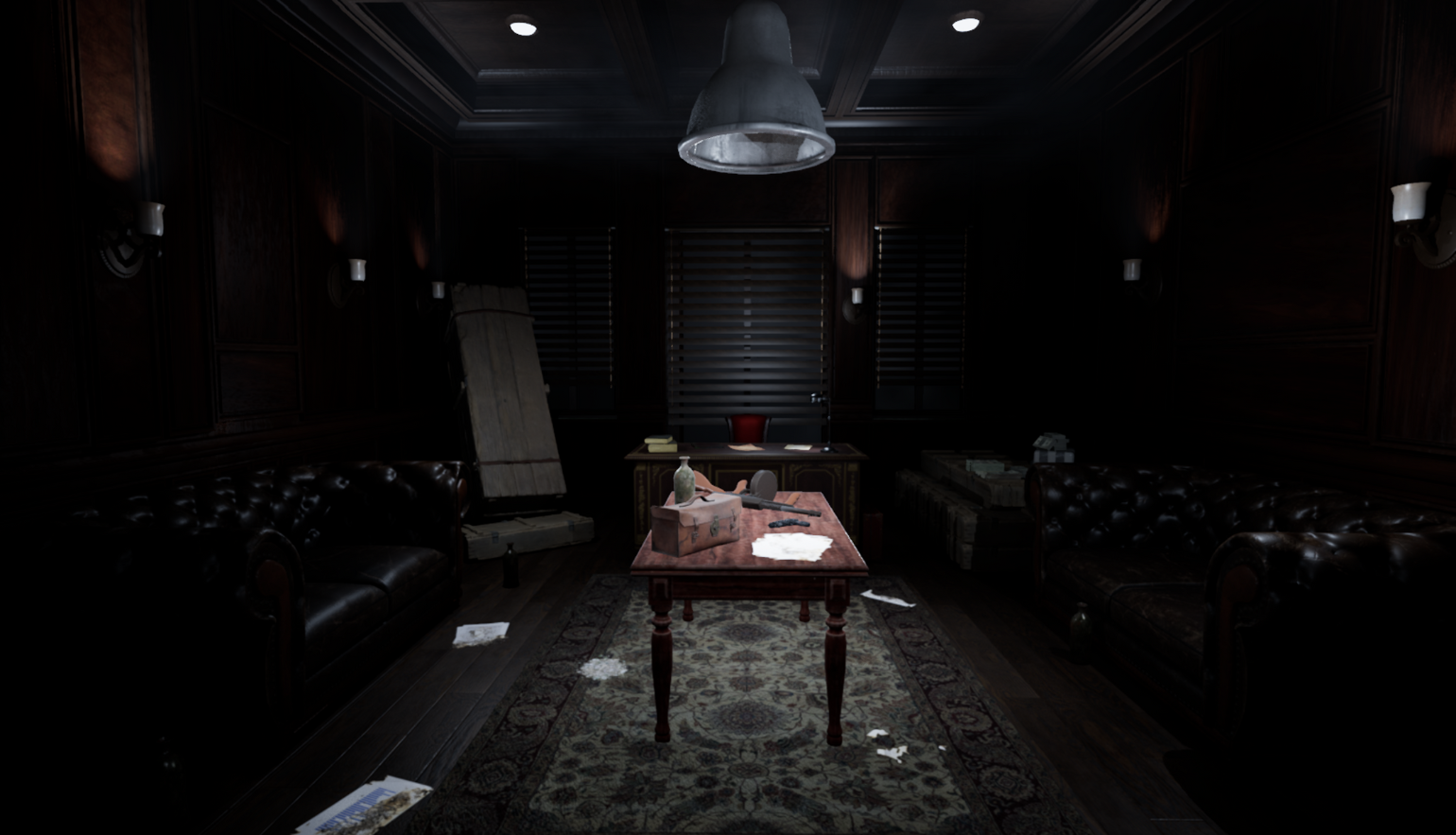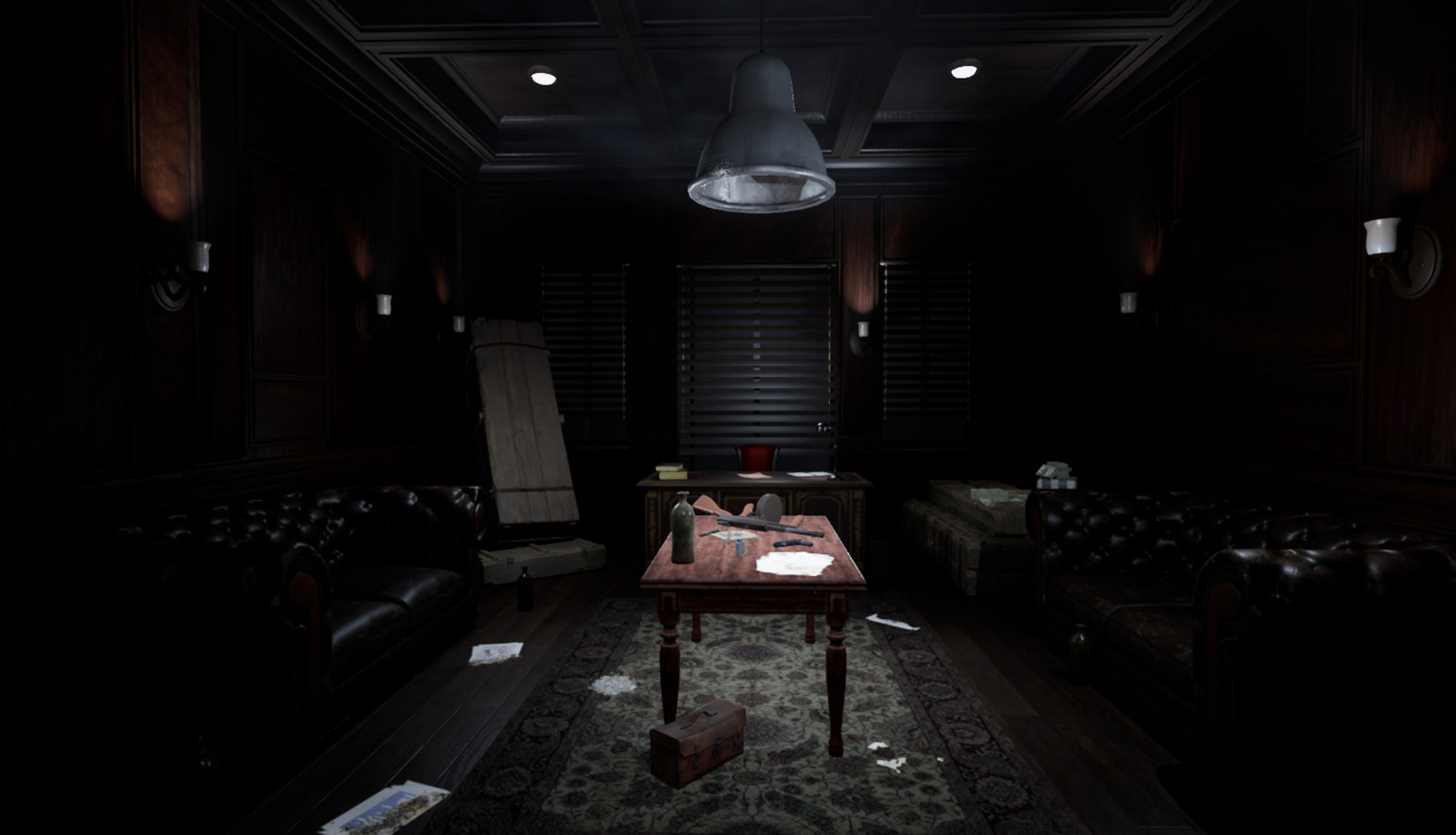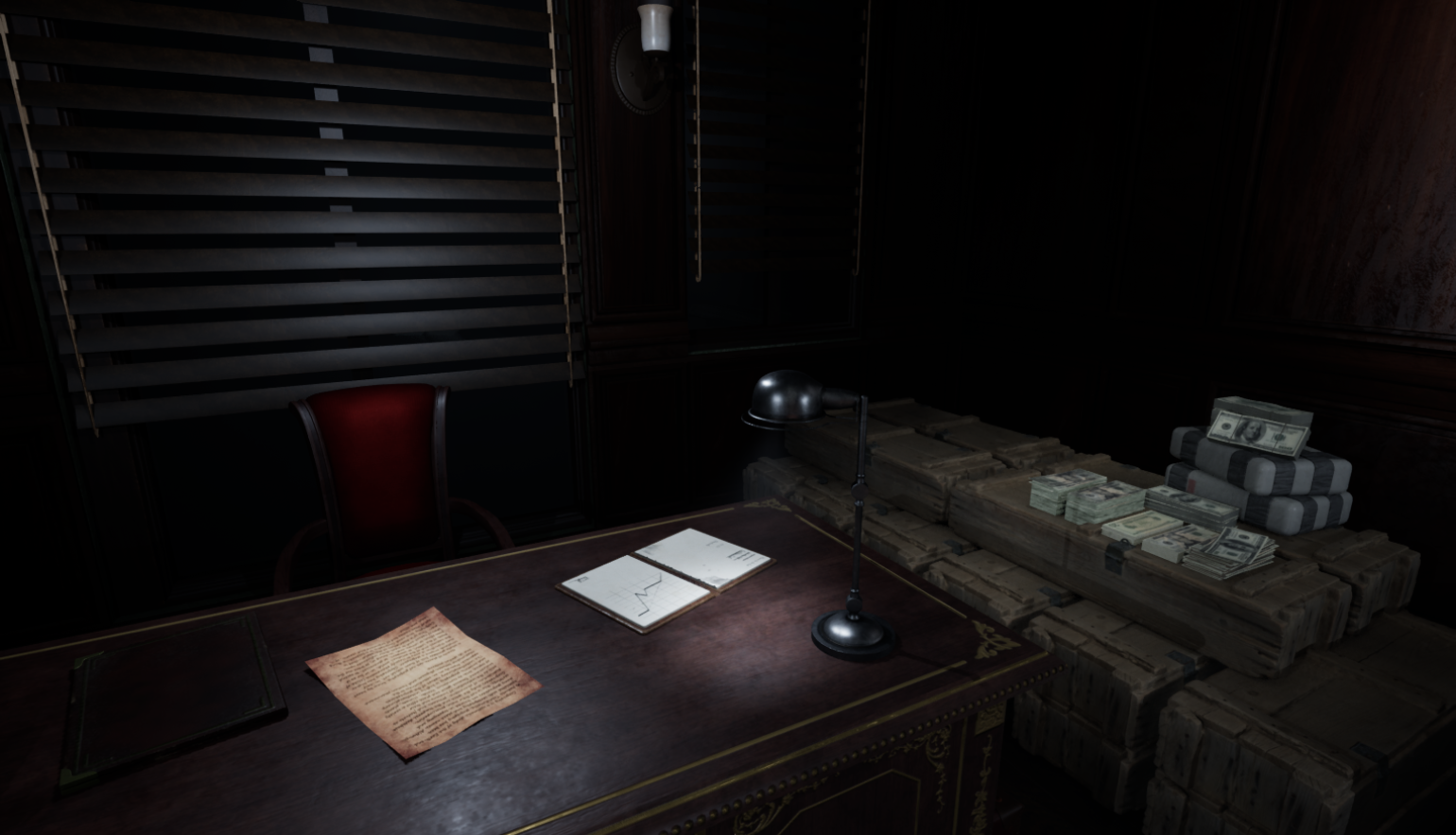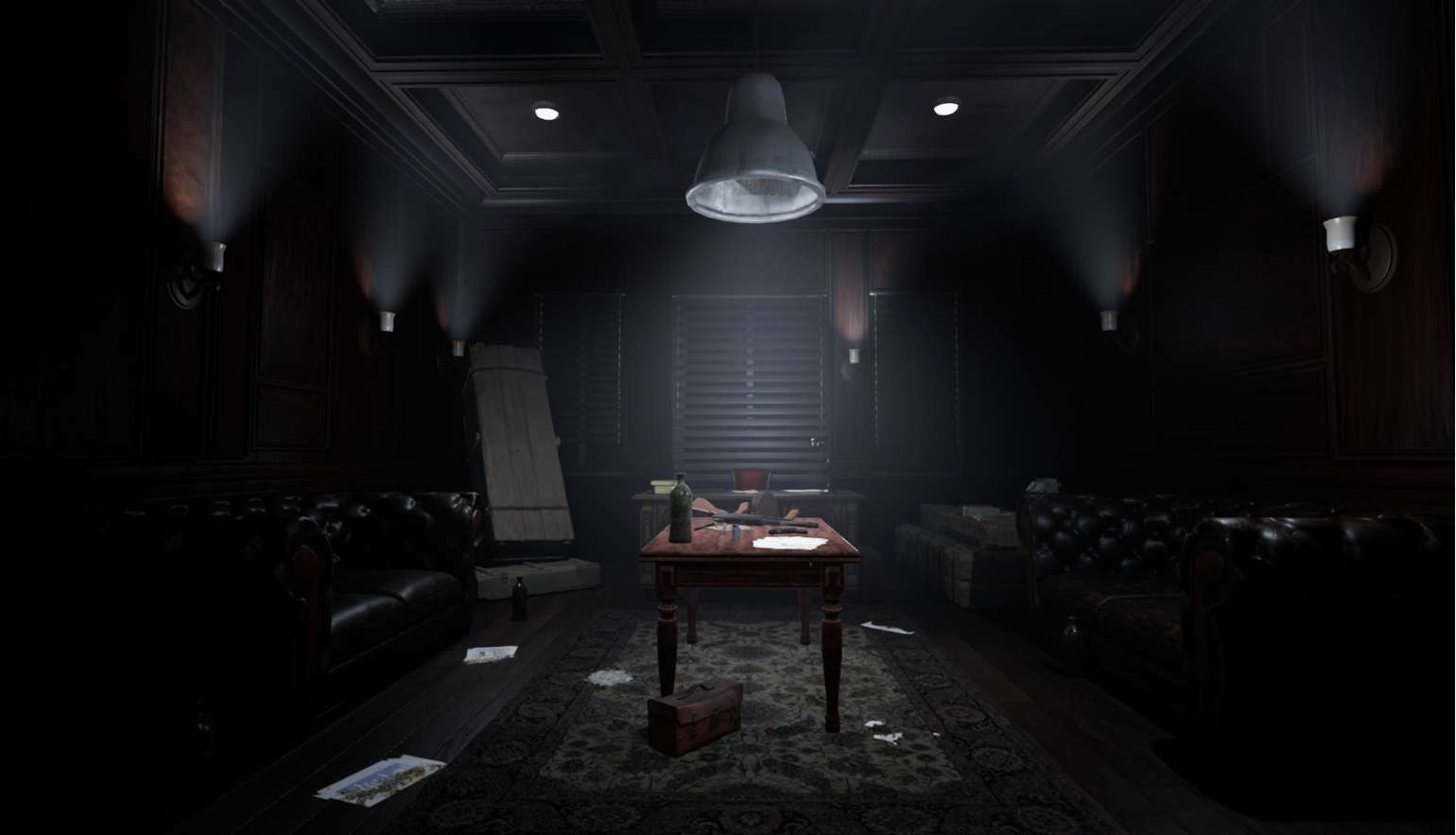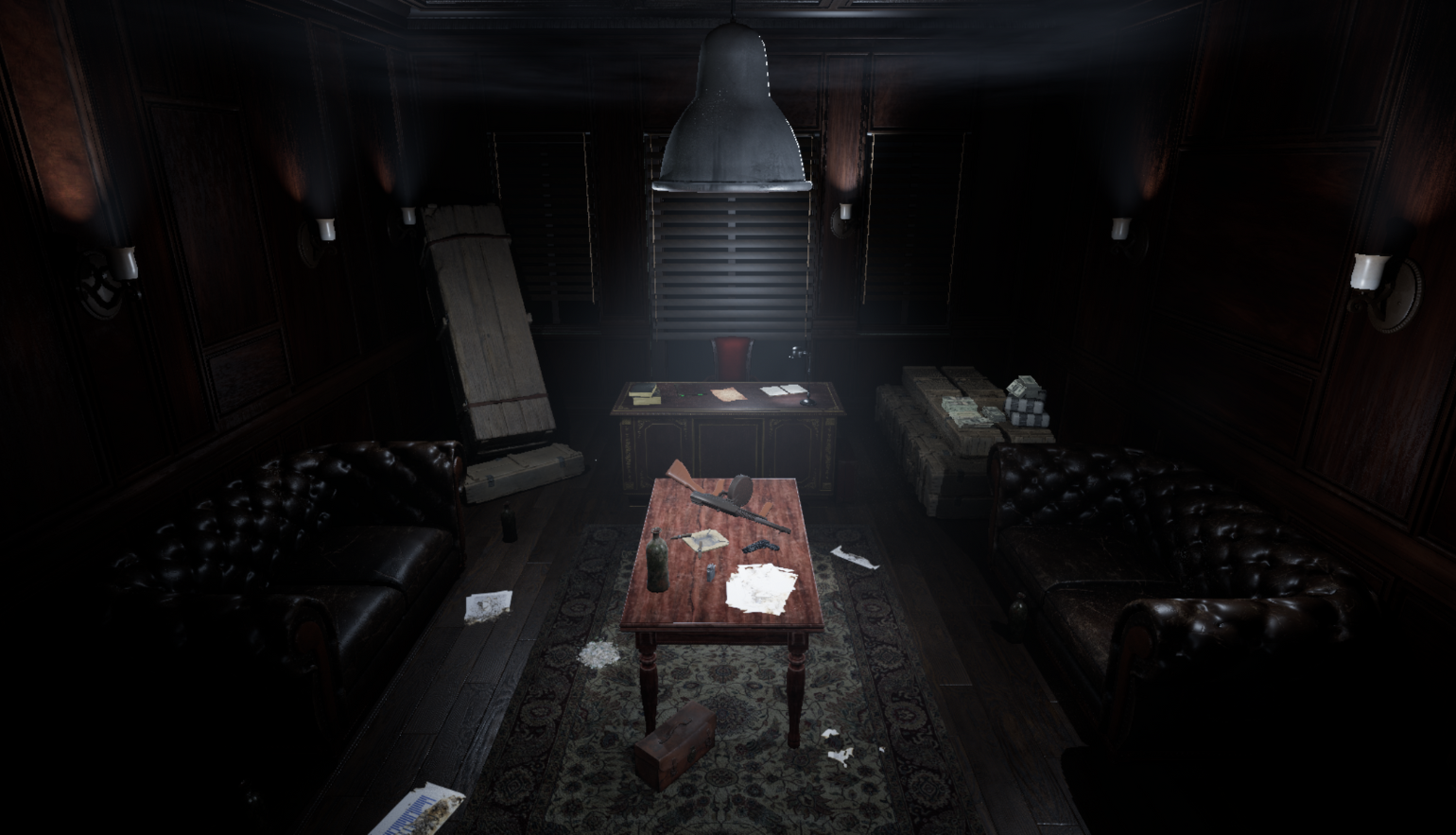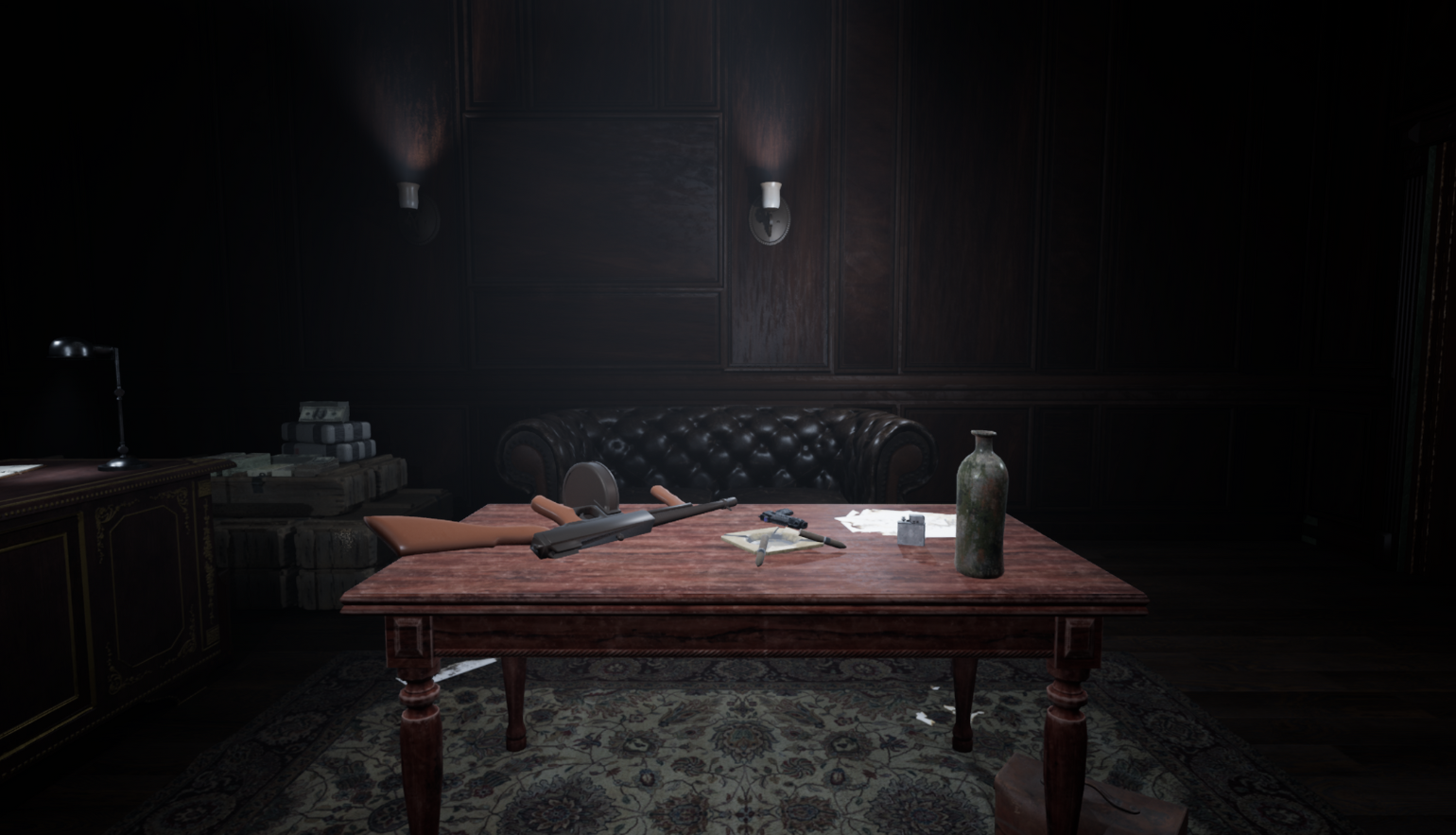about this project
This project, created for the Virtual Production course at RTVE Instituto, involves transforming a space into a "Gangster Room" using Unreal Engine 5, focusing on lighting, textures, and furniture placement to create a dark, mysterious atmosphere, with careful attention to camera angles and narrative elements.
Introduction
The goal of this project was to transform a previously lit environment with warm and cozy tones into a dark and cold space that evoked a true "Gangster Room," full of mystery and intrigue. To achieve this, advanced lighting and design techniques were implemented in Unreal Engine 5, prioritizing the use of cool tones, deep shadows, and environmental details such as floating dust particles. This approach allowed for the creation of a visually immersive and narratively coherent environment, reflecting tension, abandonment, and an atmosphere typical of a place where decisions of a particular nature are made.
General Lighting and Atmosphere
The first step in transforming the environment involved removing all furniture to focus exclusively on lighting and the general atmosphere of the space. This allowed for the establishment of a solid base for the rest of the design.
Initial Lighting Adjustments:
Main Light Direction:
The existing directional light was adjusted to reduce its intensity, eliminating the warm tones and setting it with a cold gray color (#A8B2C1).
Sky Light:
A Sky Light was used with a dark gray color (#445566) and a low intensity to minimize global warm lighting.
Post Process Volume (Expanded):
The Post Process Volume was used to make detailed adjustments that reinforced the somber and cold atmosphere of the environment, providing visual coherence to the setting. These changes included:
Exposure:
- Fixed exposure was set to prevent automatic brightness changes:
- Min EV100: -3
- Max EV100: -4
Color Grading:
- In the Global section, adjustments were made to slightly desaturate the colors and give them a cold tone:
- Saturation: Reduced to 0.8 to avoid overly vibrant colors.
- Gamma: Midtones shifted to bluish grays to enhance the cold atmosphere.
- Shadows Tint: A slight bluish-gray tint (#445566) was applied to the deep shadows.
Ambient Occlusion:
- The intensity of ambient occlusion was increased to emphasize shadows between objects and walls, providing more contrast and realism:
- Intensity: 1.2
- Radius: The radius was reduced to smaller values (0.3) to generate more defined shadows in key areas, such as around the furniture.
Bloom:
- The Bloom effect was adjusted to minimize any unnecessary brightness that could detract from the somber atmosphere:
- Intensity: 0.1
Vignette (Viñeta):
- A soft vignette effect was used to focus attention on the center of the scene:
- Intensity: 0.4.
Grain (Ruido):
- A slight grain was added to the image to simulate a more raw and classic appearance, reinforcing the aesthetic of a "Gangster Room":
- Intensity: 0.05.
Texture Adjustments
After establishing the lighting and general atmosphere, the next step was to work on textures to reinforce the aged, worn, and gloomy look of the environment. This process was applied to the floor and walls, and later repeated on the furniture and decorative objects added in subsequent stages, ensuring aesthetic consistency throughout the scene.
Wall Textures:
- Roughness:
- Increased to eliminate shiny reflections that did not fit the gloomy aesthetic, making the walls appear more opaque and aged.
- Specular:
- Reduced the specular value to minimize reflections, making the surfaces absorb more light rather than reflect it, reinforcing the muted appearance.
- Decals:
- Wood and dirt decals were applied to simulate the passage of time and add more realism.
Floor Texture:
- Additional Decals:
- Subtle footprints and marks were added to give the impression that the space had been used recently.
- Similar adjustments in roughness and specularity ensured that the floor did not reflect unnecessary light.
-
Cohesion of textures in the new elements:
- This aging and roughness approach was applied to all objects added in later steps (furniture, decorations, and other accessories).
- Consistency in materials helped maintain immersion in the cold, somber environment.
Basic Furniture
With the proper lighting and textures in place, the next step was to begin placing the basic furniture to define the initial composition of the space. This process served as an exploratory phase to establish a functional and visually appealing layout, adapted to the concept of a "Gangster Room."
In this step, I focused on creating a central space that would be the main focal point of the scene. To do this, I placed a desk at the front of the room, accompanied by a rug to make it feel cozier, and a simple table in the center. On either side, I placed two sofas to balance the space and enhance the classic feel of a meeting room, typical of a "Gangster Room."
Choosing the sofas was complicated because I wanted them to fit the overall style. In the end, I decided to keep the sofas that were included in the original scene, as their dark leather design worked perfectly with the atmosphere I wanted. The rest of the furniture, such as the desk, rug, and table, were imported from asset libraries that allowed me to add details better suited to the scene's concept.
The furniture was strategically arranged to direct attention to the center of the room, where the main action takes place. Additionally, its arrangement helps maintain visual balance, making the scene look coherent and well-structured, without losing the somber atmosphere of the space.
Final Furniture
With the basic layout defined, additional furniture and decorative objects were added to enrich the visual narrative and complete the "Gangster Room" aesthetic. In this stage, the selected assets focused on reflecting elements typical of a mafia-like environment, filled with mystery and illegal activities.
Added Assets and Placement:
Central Zone:
- Mafia weapons, disorganized papers, an ashtray with cigars, a lighter, several glass bottles, and a small leather pouch were placed here.
- This composition, under the hanging industrial lamp, reinforces the idea of a place where important decisions are made and shady business is done.
Desk:
- On the main desk, scattered papers and books were added to give the feeling of recent activity.
- A small lamp was also placed to reinforce the focus in this area, symbolizing a space of power and authority.
Around the Sofas:
- Additional bottles were distributed near the sofas to give a careless touch, suggesting informal meetings or prolonged discussions.
Wooden Boxes:
- Several wooden boxes were placed at the back of the room, leaving what they could contain up to interpretation: weapons, money, or illegal substances.
- On top of these boxes, bundles of cash and sealed packages were added, increasing the mystery and reinforcing the concept of clandestine activities.
Additional Details:
- A coat rack was placed near the entrance, adding a classic and functional touch to the design.
Papers on the floor:
- All the papers scattered on the floor were added as decals. This allowed them to blend perfectly into the scene.
Final Lighting
In this step, final adjustments were made to the lighting to integrate the new furniture and objects, ensuring the atmosphere remained consistent with the concept of a "Gangster Room." This process included placing additional lights and modifying existing ones to highlight key elements and balance the scene.
Final Lighting
ButtonCamera Angles
The camera angles were carefully selected to highlight the key elements of the scene and provide versatility for using the environment in a cinematic production. Each angle was designed to fulfill different narrative needs and capture the somber atmosphere of the "Gangster Room."
High Angle of the Room
Description: This shot shows the entire room from an elevated angle.
Use: This angle emphasizes the room's symmetry and organization while maintaining the atmosphere. It highlights the central lighting and narrative details like weapons and money.
It can be used as an opening shot to situate the viewer in space or as a resource for visual transitions during a scene.
A more inclined plane (dutch angle) could be experimented with.
Justification: This angle highlights the symmetry and organization of the room, while maintaining the atmosphere of the environment. In addition, it allows the central lighting and narrative details such as weapons and money to stand out.
Close-Up of the Desk with Depth of Field
Description: This shot focuses on the desk, with the central table, sofas, and the door in the background.
Use: This angle emphasizes the desk as a key narrative element.
It allows important details such as papers, books, and the lamp on the desk to stand out, while keeping the center table and the bundles of money in the boxes on the side visible.
It can be used to shift the focus to the door when someone enters, adding tension or drama.
A subtle movement could be added to the camera (such as a slow dolly forward).
Justification: This angle is perfect for close-ups that reinforce the authority or power of the character at the desk, as well as maintaining visual connection to other important elements in the room.
Side Medium Shot with Vanishing Point
Description: This shot focuses on one of the sofas, capturing part of the central table as well.
Use: Designed as a static camera that can focus on conversations between characters seated on the sofas, giving prominence to both the furniture and the objects on the central table.
It is also ideal for reaction shots or to show specific details of the environment, such as bottles or papers on the floor.
This configuration could be duplicated with an inverted shot to show both sofas (in a side-plane).
Justification: This angle allows us to emphasize the interactions between the characters and the connection to the narrative elements of the central table, while maintaining the charged and oppressive atmosphere of the space.
Asset Bibliography
All assets used in the scene were obtained from Fab.com, a library integrating resources from Unreal Engine, Blender, and other creative tools. Models and textures were carefully selected to match the aesthetics and narrative of the "Gangster Room."
Table - https://www.fab.com/listings/baece383-bc75-4de8-971d-25110a169a36
Carpet - https://www.fab.com/listings/f799d30d-f540-4468-b4c8-d36b612a8c8a
Glass Bottle - https://www.fab.com/listings/46a58627-1263-4981-b7c6-5da09337e346
Papers Decals - https://www.fab.com/listings/048ae788-6232-47bb-9ff0-54f773efd597
Hand Gun - https://www.fab.com/listings/52b333cc-9768-415e-89aa-8d43a8a3f7d4
Tommy Gun - https://www.fab.com/listings/e95a5ed6-c03e-4710-8f5a-9a5d3f458076
Industrial Lamp - https://www.fab.com/listings/3002f282-340b-4519-a9aa-bcdf637bd11e
Desk - https://www.fab.com/listings/f799d30d-f540-4468-b4c8-d36b612a8c8a
Book and Desk Papers - https://www.fab.com/listings/f799d30d-f540-4468-b4c8-d36b612a8c8a
Desk Lamp - https://www.fab.com/listings/2f7ad1c7-320f-41b8-9483-e581ee0d6970
Desk Chair - https://www.fab.com/listings/f799d30d-f540-4468-b4c8-d36b612a8c8a
Long Wooden Crate - https://www.fab.com/listings/1a270f06-3797-4bce-9b09-01c81737ad6c
Small Wooden Crate - https://www.fab.com/listings/df755685-7c84-4013-a0dc-4576af0bf848
Money Pile - https://www.fab.com/listings/d145cd5d-b87e-4f41-ba0c-05241e7b6b42
Walls Decals -
https://www.fab.com/listings/2a990dab-f406-4e2d-b08e-a4632fe8c75d
Conclusion
This project has been a great challenge, but also an incredibly rewarding experience. Remodeling an environment from scratch is no easy task, but I am very happy and proud of the result. The creative process, such as decorating the space and thinking through every detail, was definitely the part I enjoyed the most. It was during this phase that I truly let my imagination run wild, giving the design a unique touch and bringing the "Gangster Room" to life. Watching how each element came together and formed the atmosphere I was aiming for motivated me to keep going.
Working on the camera shots was also one of the most enjoyable parts. Building each shot and thinking about how they could fit into the narrative made me feel like a film director, which is something I’ve always been passionate about. Combining the visual aspect with a narrative approach was incredibly fun and allowed me to explore a different creative facet.
However, lighting was undoubtedly the most challenging part. Although I think I managed to capture the right atmosphere with the help of the Post Process Volume, I feel there’s still much to improve in this regard. I would have loved to create this environment in a daylight setting to explore a different contrast, but I believe I adapted well to the difficulties and conveyed the atmosphere I was after.
I know this environment is not perfect, and that I still have a lot to improve, especially in the smaller details of the decoration. I realize that paying more attention to the decorative elements and how they integrate into the narrative could have elevated the final result even more. But I’m sure that with more time and experience, I’ll be able to adapt better and create more refined and complete environments. This is just the beginning, and I’m excited to keep learning and improving.
Finally, one of the things that made me the happiest was seeing the progress in the environment. From adjusting the textures to give them a more worn look to adding small details like decals or decorative objects, each change made the space feel more authentic and connected with the narrative I wanted to tell. Seeing that progress gave me incredible motivation to keep going and enjoy the process.
In summary, this project has taught me a lot, both technically and creatively. While there will always be things to improve, I’m satisfied with what I achieved and proud of having added my personal touch. And of course, I look forward to growing in this path.
Developed Competencies
- Environment Design in Unreal Engine 5: Transformation of an existing environment by adjusting lighting, textures, and asset placement to establish a cohesive visual narrative.
- Lighting and Post-Processing Techniques: Proficient use of Post Process Volume to control exposure, color grading, ambient occlusion, and other visual effects to enhance mood and atmosphere.
- Material and Texture Optimization: Modification of roughness, specularity, and decals for realism and visual consistency across all elements in the scene.
- Narrative-Driven Set Dressing: Strategic placement of props and furniture to reinforce storytelling and immerse the viewer in a believable, thematic environment.
- Cinematographic Framing: Composition and selection of camera shots to highlight key areas of the environment, emphasizing narrative and spatial design.
- Creative Problem Solving: Adapting assets and scene elements to fit a specific atmosphere while maintaining performance and visual quality.
-
Attention to Detail: Focus on small elements like floating dust, scattered papers, and lighting subtleties to enrich the environment's authenticity.


